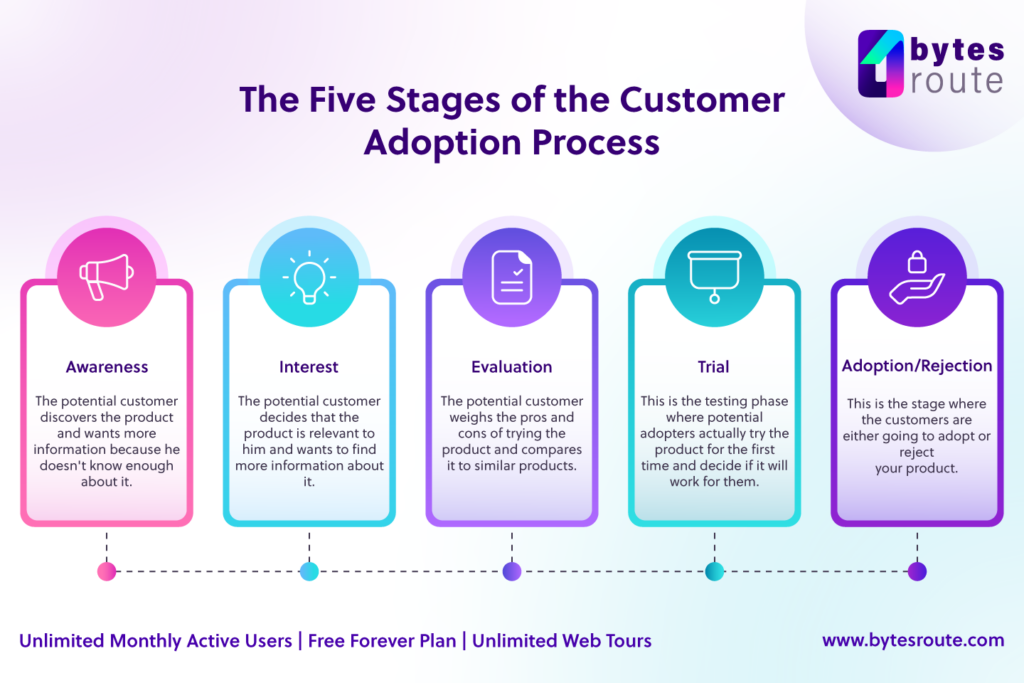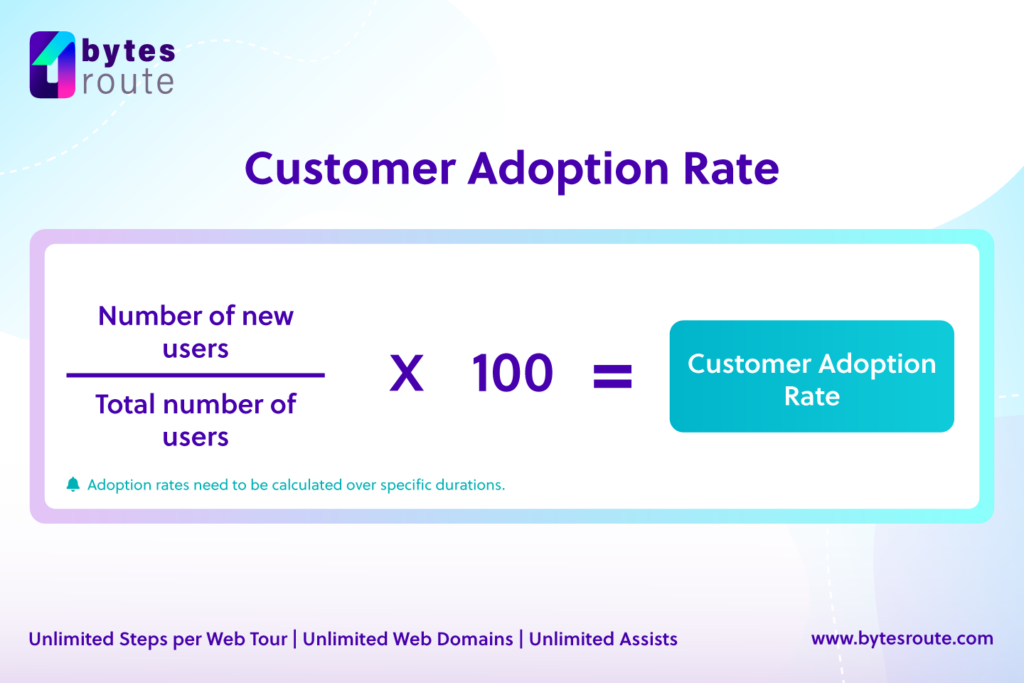What is customer adoption?
The term “customer adoption” describes the process through which a company gains the first and recurring buyers of a newly introduced product. It’s the full cycle from a consumer becoming aware of a product to using that product in their daily routine. It also measures how quickly consumers learn to use a product or service effectively.
Why is customer adoption important?
Product adoption increases customer awareness of new product features. It also enables the client to build relationships with the company and helps develop a lasting relationship between the client and the brand.
SaaS companies know a lot about product adoption because they often struggle to retain consumers. Such businesses continue to look for new methods to retain customers on board and engage.
Customer Adoption Process
Customer adoption is the mental process a person goes through from the initial stages of purchase through the end. From the moment they start to think about buying a product to the moment they finally make the purchase.
Most buyers have very specific demands which require a thorough analysis to satisfy. The decision to buy at the beginning of the product lifecycle is quite different from the decision to buy later on.
There are five stages to the customer adoption process:
- Product Awareness
- Product Interest
- Product Evaluation
- Product Testing
- Product Adoption

Customer Adoption Curve
A customer adoption curve is a tool used to categorize users by a variety of criteria if they are fans of new ideas or new technologies. This system divides consumers into five categories: innovators, early adopters, early majority, late majority and laggards.
The Customer Adoption curve is an arched spiral that divides client information into the five categories mentioned above.
Customer Adoption Rate
The customer adoption rate is measured by the following equation:

Adoption rates need to be calculated over specific durations.
To illustrate it, let’s say your new feature is launched to 1,000 clients, and 250 of them decide to adopt it. Your adoption rate is 25%.
Before you can measure customer adoption, you need to decide who counts as an adopted user.
Software adopting metrics provides significant improvements in the user experience. Organizations can only make progress in this direction by tracking current performance and planning for the future.
How to Drive Customer Adoption
In order for a product to be fully adopted, it must provide all of the characteristics that end consumers would require. It’s crucial to pick the right product adoption strategies as different consumer segments embrace your product at different phases of its lifecycle.
Learn from feedback
Take into account the feedback users give you – what works, what they liked and what they didn’t like. Then, adjust your product accordingly.
Improve consumer experience
One approach to encouraging client adoption is to give a superior product or service. You need to provide real value to your customers, but your product should also be easy to understand and use. Customers will be more willing to adopt new features and tools if they are satisfied with the overall product and service they receive.
Onboarding process
The onboarding process is a significant factor in increasing customer adoption.
The first thing to keep in mind is that customer onboarding is a continuous process and it doesn’t end in a few weeks. A user’s whole time spent with your company should be viewed as an onboarding process if you want them to remain actively engaged and enjoy the benefits of your product.
You can use digital adoption platforms to show users how to set up and use your product with in-app guided tours. Also, you can make people aware of updates or new features.
The main advantage of in-app product walkthroughs is that people can access them at any time and take them how many times they want.